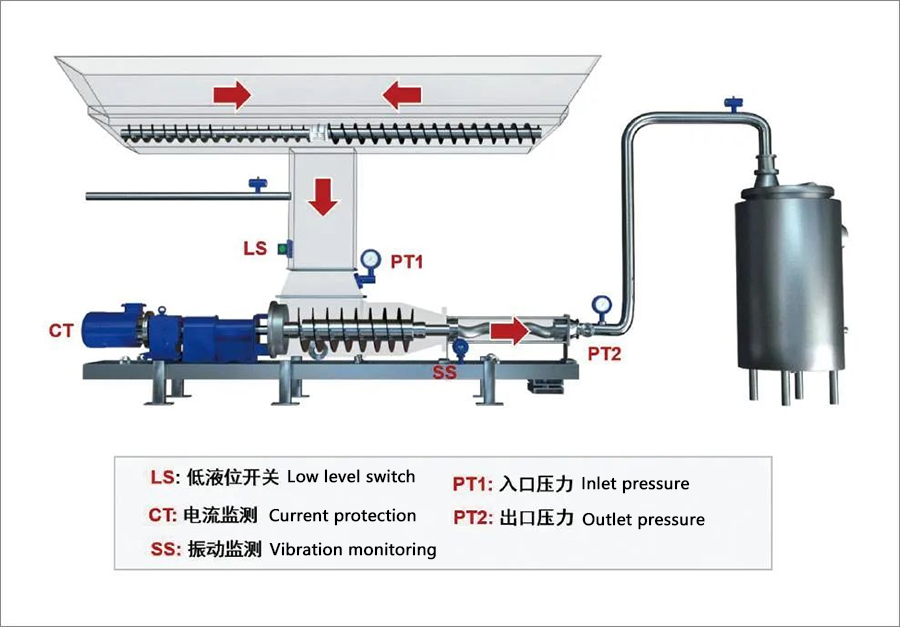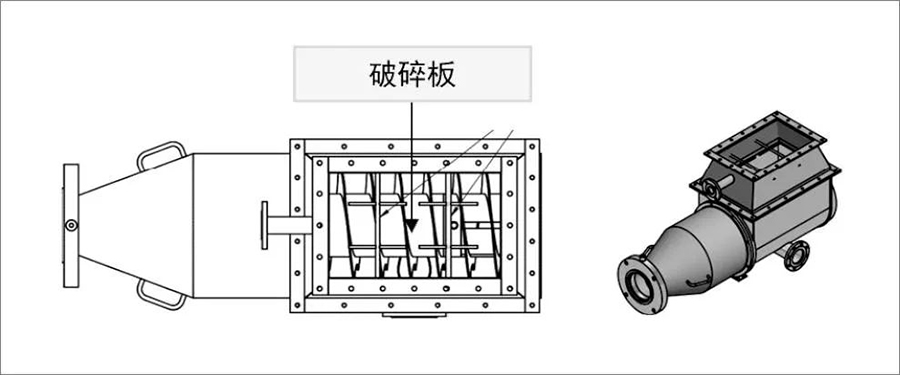1. Conveying site before technical transformation
In the past, most breweries used the pneumatic process of auger and air compressor to convey distiller's grains, and after the filter press was dehydrated, the water content was 50%-80%, which was transported to the auger below through the connecting groove at the bottom, pushed into the pipeline, and blown into the outdoor storage tank with compressed air for unified recycling.
There are problems with pneumatic conveying, one is high energy consumption and high operating costs; Second, the auger is fragile and has high maintenance costs; Third, in the peak season, the air volume of the air compressor cannot fully meet the demand for brewer's grains transportation, and the air volume needs to be supplemented from the large system, and the untimely air replenishment will affect the conveying efficiency. Fourth, the conveying speed does not match in the peak season, and the auger is easy to block, which affects production.
2. After transformation with progressing cavity pump

A specially modified hopper is used to connect directly to the trough at the bottom of the filter press. The brewer's grains enter the screw pump silo through the lower connecting tank, and are transported to the outdoor slag storage tank through the screw pump for unified recycling.
The overall advantages of progressing cavity pump include: first, high efficiency and short conveying time, which can be reduced by about half compared with the previous pneumatic conveying; Second, the energy consumption is low, the driving power is only 25% of the total power of pneumatic transmission, and the power consumption is lower; Third, the maintenance cost is low, the downtime is short, and sufficient production capacity is ensured. In addition to regular maintenance and replacement of wear parts, the equipment can be maintenance-free; Fourth, the pipeline can be cleaned, and the pipeline can be cleaned through forward and reverse operation to meet the sanitary requirements.
Based on the characteristics of conveying distiller's grains (non-Newtonian fluids), progressing cavity pump manufacturers have designed special inlets to precisely match the discharge speed of the filter press to achieve the purpose of process optimization.
More energy-saving and efficient progressing cavity pump stator and rotor. The structure of the homogeneous wall stator is used to improve the pressure bearing capacity, high temperature resistance, prolong the service life and reduce the maintenance cost.

Fig. 3: Profile of a progressing cavity pump with hopper and screw thruster
Customized feeding system design. The water content of the grain of the filter press is low, the water content is about 50%, and it is easy to agglomerate during the conveying process, and the lumpy material enters the screw system to form a bridge, which makes the normal fluidity of the grain worse and the conveying efficiency is reduced. In order to solve this problem, the grossa crushing device is designed and added at the inlet of the screw system, and the transverse and longitudinal crushing devices are added to prevent the agglomerated grosss from entering the system.
Customized hopper design. The reducer hopper is designed according to the size of the on-site bad box, which is convenient for on-site installation and reduces the cost of transformation. The level transmitter is installed in the hopper, which can monitor the liquid level of distiller's grains, ensure sufficient feeding, and prevent the pump from running dry; Customized auxiliary spiral propulsion blades to match the actual production needs.

Fig. 4: Feeding system with crushing function
Customized conveying system. In the working condition of grain conveying, the positioning conveyor vane is developed and used, and the feeding vane extends from the universal joint at the drive end of the progressive cavity pump to the universal joint at the rotor end to avoid the accumulation of media here. The feed vanes almost axially reach the stator chamber opening of the pump. The front end of the spiral blade is always aligned with the concave direction of the rotor, and the wheat grains smoothly enter the screw through the spiral to improve the conveying efficiency.
Contact: NEIL
Phone: 86-18205509969
E-mail: 18205509969@139.com
Add: 118, Building 3, Tianrun City Phase II, Tianchang City, Anhui Province. China